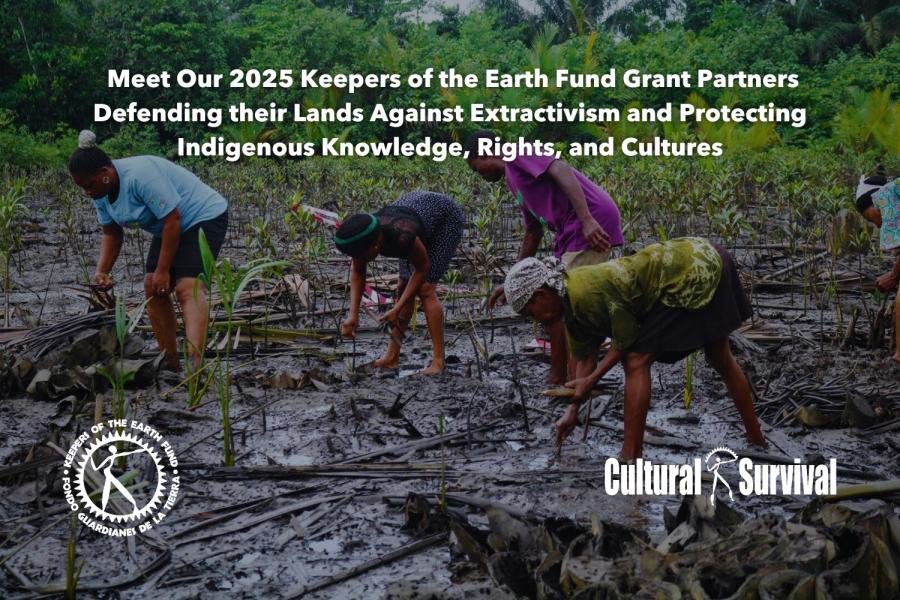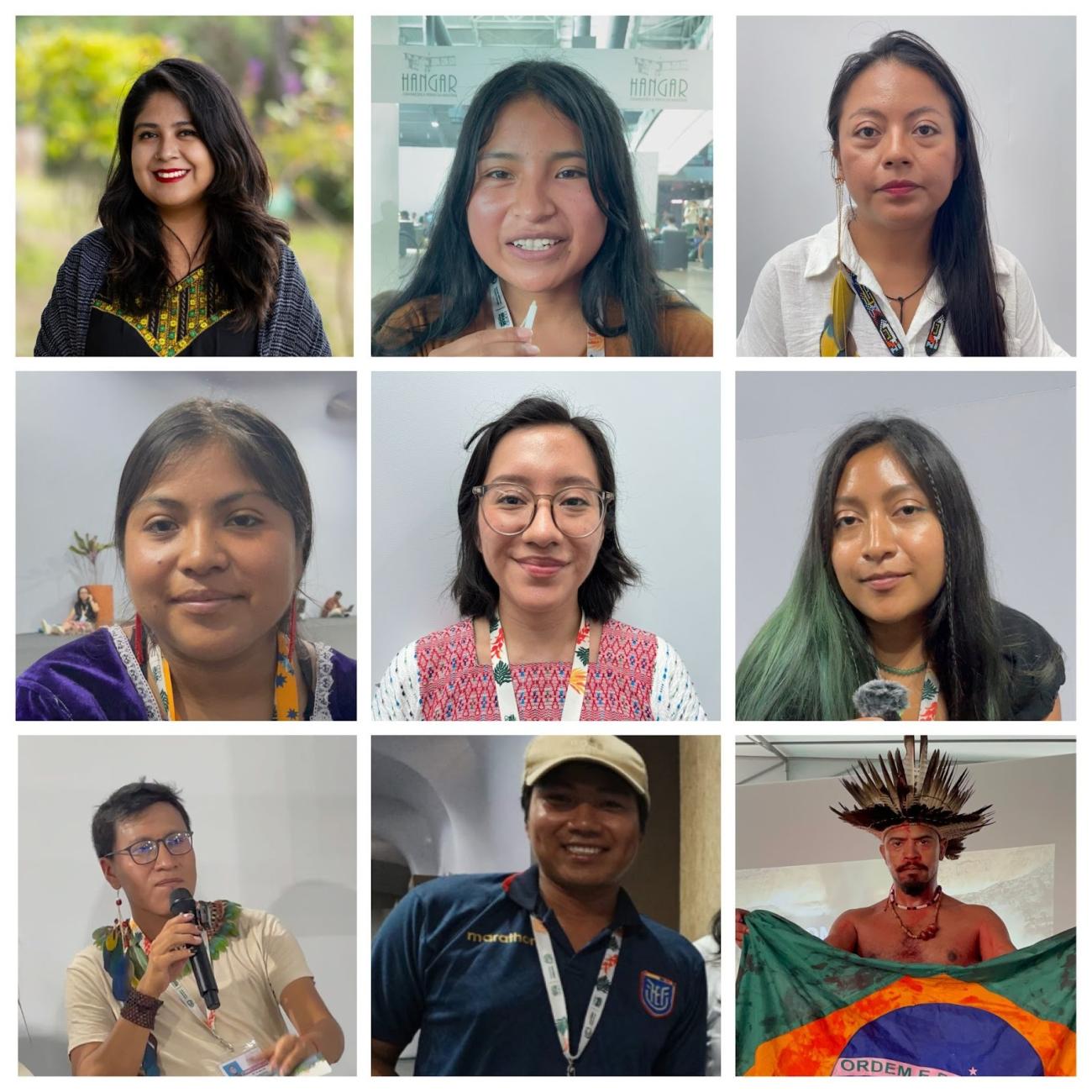
By Mariana Kiimi Ortiz Flores (Ñuu Savi/Mixteca, CS Staff)
From November 10 to 21, 2025, the most important international climate conference took place. Better known as COP30, it refers to the Conference of the Parties to the United Nations Framework Convention on Climate Change (UNFCCC). This conference marked a milestone in its history, as its location in the Amazon, in Belém do Pará, Brazil, brought to light the importance of key actors such as Indigenous and Quilombola Peoples in strategies to address the climate change crisis, albeit only symbolically, to the surprise of a few.
Hundreds of people from Indigenous communities traveled from our homes to participate in a forum that for years has imposed a series of barriers on our ability to advocate for our rights and those of Mother Nature. At times, I felt frustrated by not fully understanding how the conference worked, but I realized I wasn't alone and that other young people, like me, felt lost despite preparing to attend this important event for the first time.
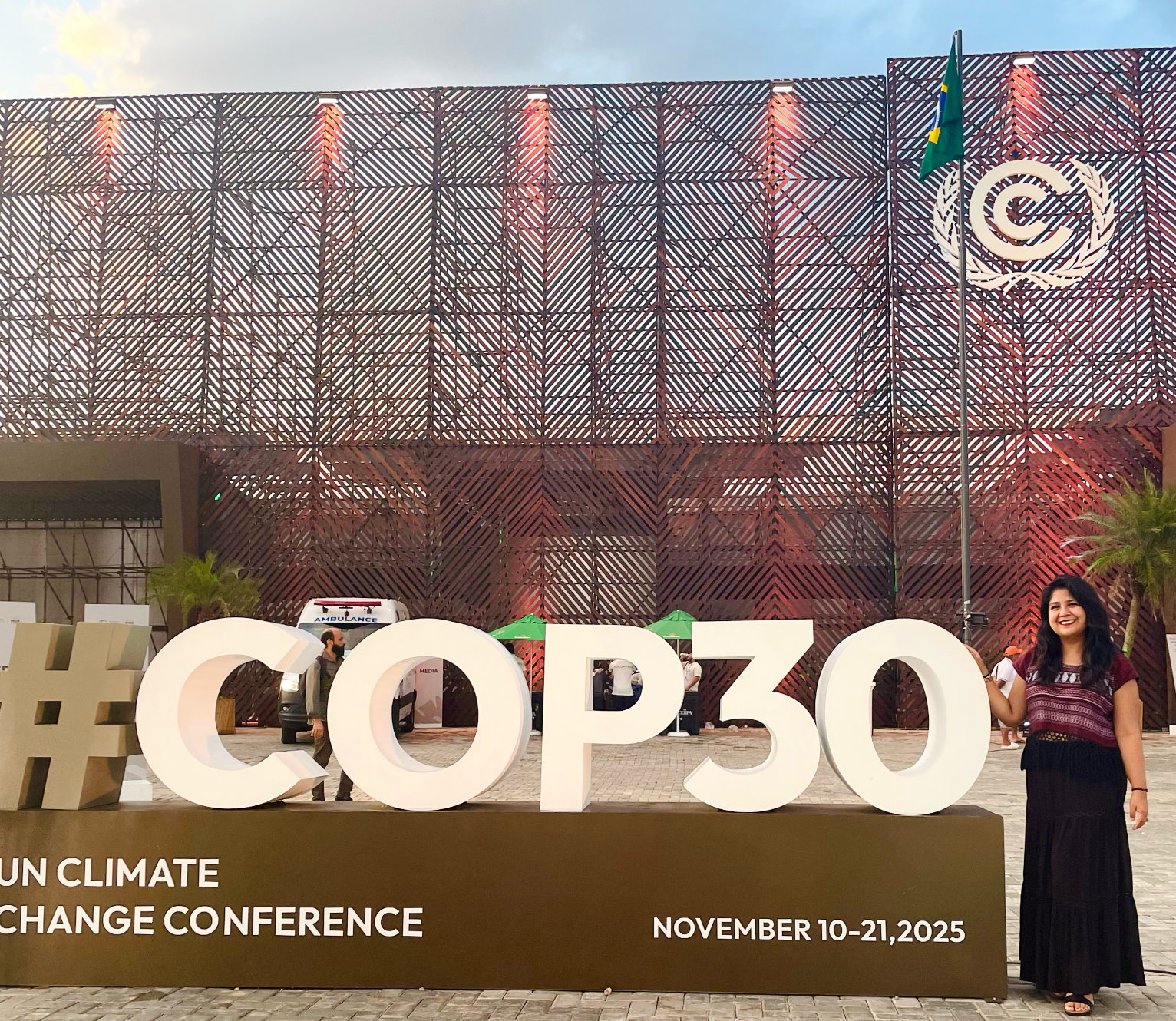
As a Ñuu Savi woman who once studied the United Nations system at university but was unfamiliar with the UNFCCC, its structure, and its dynamics, I had to prepare months in advance and learn to navigate the online space. It wasn't easy, as preparing with theory is very different from experiencing it firsthand. Fortunately and unfortunately, I realized I wasn't alone in these feelings.
I decided to write this article after realizing there's a significant lack of access to information written in a language understandable to those unfamiliar with the conference. Additionally, in conversations with other Indigenous youth present at the event, I realized that many, like myself, struggled to understand how the conference operates and how to make a practical impact. Therefore, I hope this text will help more Indigenous youth participate in future COPs without feeling insecure, lost, or at least not so much. But it's important to remember that it's normal to feel this way, since the United Nations system was designed so that only the superpowers have a say in decisions about the future of humanity, according to their own interests, leaving Indigenous Peoples out.
It's crucial to keep in mind that one of the most significant limitations for preparing for and accessing conference resources, as well as for participating in it, is the language barrier. The universal language of this world remains English, and although interpretation is sometimes available, there's no guarantee of linguistic fairness.
This is what Deniza, from the Chequia Alta community in Bolivia and a recipient of the Cultural Survival Youth Fellowship, says:
“The biggest challenge is the language; because of the issues here, most negotiations are conducted in English. So, I've seen that this aspect makes it a bit more difficult or complicated for one to participate actively, to make one's voice heard, to share the problems, but also the solutions. You could say, then, that you have to know English, because you can't do it with your own language, whether it's Spanish or the language of your communities.
I prepared for the event by reading all the available information about the UNFCCC and the history of the COPs. I researched what the event was about, its objectives, and the main topics of discussion and negotiation for the States Parties, and let me tell you, that wasn't enough to understand it fully. Fortunately, organizations like Nia Tero, along with the International Indigenous Peoples Forum on Climate Change, better known as the Indigenous Caucus, held a series of six virtual training sessions on the main discussion topics for Indigenous people: a general introduction, financing, Article 6, loss and damage, just transition, gender, adaptation, and mitigation. I also read some articles by Ghazali Ohorella, which helped me act strategically during the conference. These materials were my roadmap for finally diving into the vast ocean that is the COP.
This year, the COP was dubbed the “COP of Truth,” and even the “Indigenous” COP, as it aimed to address the uncomfortable truths that many states and other actors have refused to confront: the need for a transition to a fossil fuel-free economy that is inclusive of everyone, especially Indigenous Peoples, guardians of the environment, whose participation in decision-making is key to ensuring a sustainable future and addressing the climate change crisis. The slogan seemed promising, though difficult to believe, given the countless times that COPs have excluded Indigenous Peoples.
Belém took its role as host city very seriously. From the moment I stepped onto the airport runway, I was captivated by the spectacular green lights, which announced the event of the year and welcomed us foreigners. The intense heat was also part of the warm welcome for those of us unaccustomed to the tropical climate. Sadly, behind these constructed facades, modernized buildings, and built roads lies one of the most significant contradictions: hundreds of trees were felled to create an infrastructure adequate to accommodate thousands of people.
On the first day of the conference, a great energy was palpable. Everyone was excited about the start of this promising event, which we had been anticipating for a year. The volunteers greeted us at the entrance with a warm “Bom dia” and “Bem-vindos!”, reflecting the warmth and friendliness of the people in this region. Unfortunately, this didn't last long. Due to the demonstrations that took place during the first week—one of which involved Indigenous people from the region forcibly entering the Blue Zone—there was unprecedented repression and militarization at all the entrances to the venue, leaving a feeling of hostility and a threat to our safety.

The first stop, after completing the accreditation process, was the meeting of the Indigenous Caucus, officially recognized as the International Indigenous Peoples Forum on Climate Change (IIPFCC). This was established in 2008 as a working group of Indigenous Peoples participating in the UNFCCC processes to agree on what Indigenous Peoples would negotiate in specific Convention processes. In this space, we meet daily with Indigenous brothers and sisters from around the world to strategize together and reflect on our joint influence in the negotiations regarding our rights at stake.

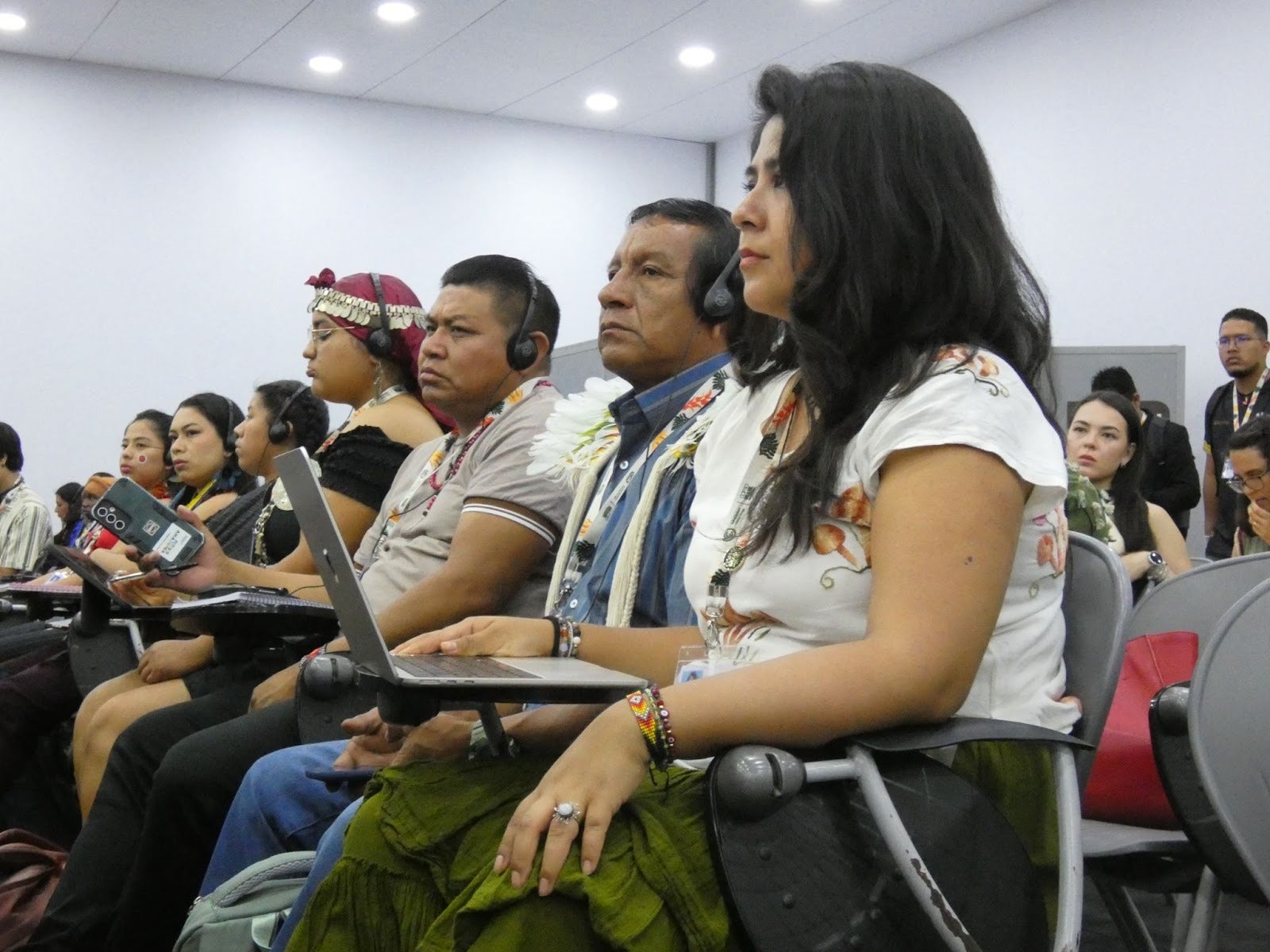
I also approached the International Indigenous Youth Forum on Climate Change, which is part of IIPFCC and arose from the need for a specific space where Indigenous youth, as the future generation with the knowledge to confront the climate crisis, can come together to strategize and collectively influence this issue.
María José Andrade Cerda, a Kichwa woman from Ecuador, describes the importance of participating in this forum:
“It’s important to know that these spaces will be overwhelming, but we must remain calm, knowing that this is a world that is structurally challenging us, but that we have our safeguards, our communities, our territories. Support will be here; whenever you see an Indigenous brother or sister, a helping hand will be extended, and I think that’s the beauty of collective processes: that we young people are not alone, but also have the opportunity to be accompanied by our elders, and they are often the ones who help us to calm down and navigate this space.”
Fortunately, these safe spaces exist amidst the sea of people attending the conference, where, as Indigenous people, we can share a smile, a song, a prayer, or even our sorrows without feeling judged, and learn from others' struggles while building networks. However, although the caucus aims to be a space for articulating all the demands of Indigenous representatives from different peoples around the world, it is not enough to make everyone feel welcome and safe. We cannot ignore the fact that in this forum, we are fighting against a system established years ago in which the most powerful actors on the international stage make decisions about our lives that are detrimental to our existence and our future.
Marielena Varillas, a Ngiwa woman from Mexico, commented that she had not felt welcome during her first experience at COP and that her expectations had been very different from reality.
“My experience has been completely different from the perspective I had before coming here, to be honest. When I arrived, I thought it was a place of coexistence, all very beautiful. But the reality is quite different: I've simply realized that what they're negotiating here is the lives of all the people in the world. And that's awful, isn't it? That people who don't have the slightest idea of what's happening in an Indigenous community spend their time negotiating our lives in such drastic ways, making it seem like it's all so easy, but they don't live in a territory, in a place of coexistence, with people who are working every day to support their families. They don't work in the fields, they don't make crafts, they don't speak an Indigenous language; they simply studied for a degree, they studied our territories, they're studying us, and now what are they doing? Well, now they're negotiating us as if we were merchandise. But clearly that's not who we are, and honestly, yes, I'm going to leave this place very sad."
Sadly, the COP remains a space difficult for Indigenous people to access. This year, participation records were broken, but unfortunately, this wasn't reflected in the Blue Zone, the area where we can have the most direct impact on our demands. However, this number is still insufficient, since the COP was created for the States Parties to reach a consensus after more than two weeks of negotiations that will affect the lives of all humanity. But where do Indigenous Peoples fit in, those of us who have historically carried out actions based on our traditional and cultural knowledge for the care of nature? If this is a "Conference of the Parties," aren't we part of a world where everyone should be involved in decision-making and contribute equally to solutions addressing the climate change crisis?
For Daniela de León, a Maya Q'anjob'al woman from Guatemala, and for many other young people attending the COP for the first time, it was difficult "to have clarity about the spaces in which Indigenous people can participate." Since most of us received "observer" status, we were denied entry to rooms where key dialogues, negotiations, and votes took place. When we were allowed to speak, we were left until the end, to give priority to state representatives. "It should be our right as Indigenous Peoples to participate in negotiations and to vote, not just the states," she said.
Despite all the contradictions and limitations of the COP, and of the United Nations system in general, it was very encouraging and inspiring for me to see so many indigenous people resisting and fighting from different spaces just like me: in the Blue Zone in the different pavilions participating in panels, in the negotiations in which for the first time language on FPIC in favor of the rights of Indigenous Peoples was added to the Work Programme on Just Transition, and on the other hand in the green zone, in the “parallel COPs” in other spaces, in the streets marching together during the Global Climate March, in the peaceful demonstrations of Indigenous people from the region outside the venue, in the anger of those who forcibly entered the Blue Zone, etc.
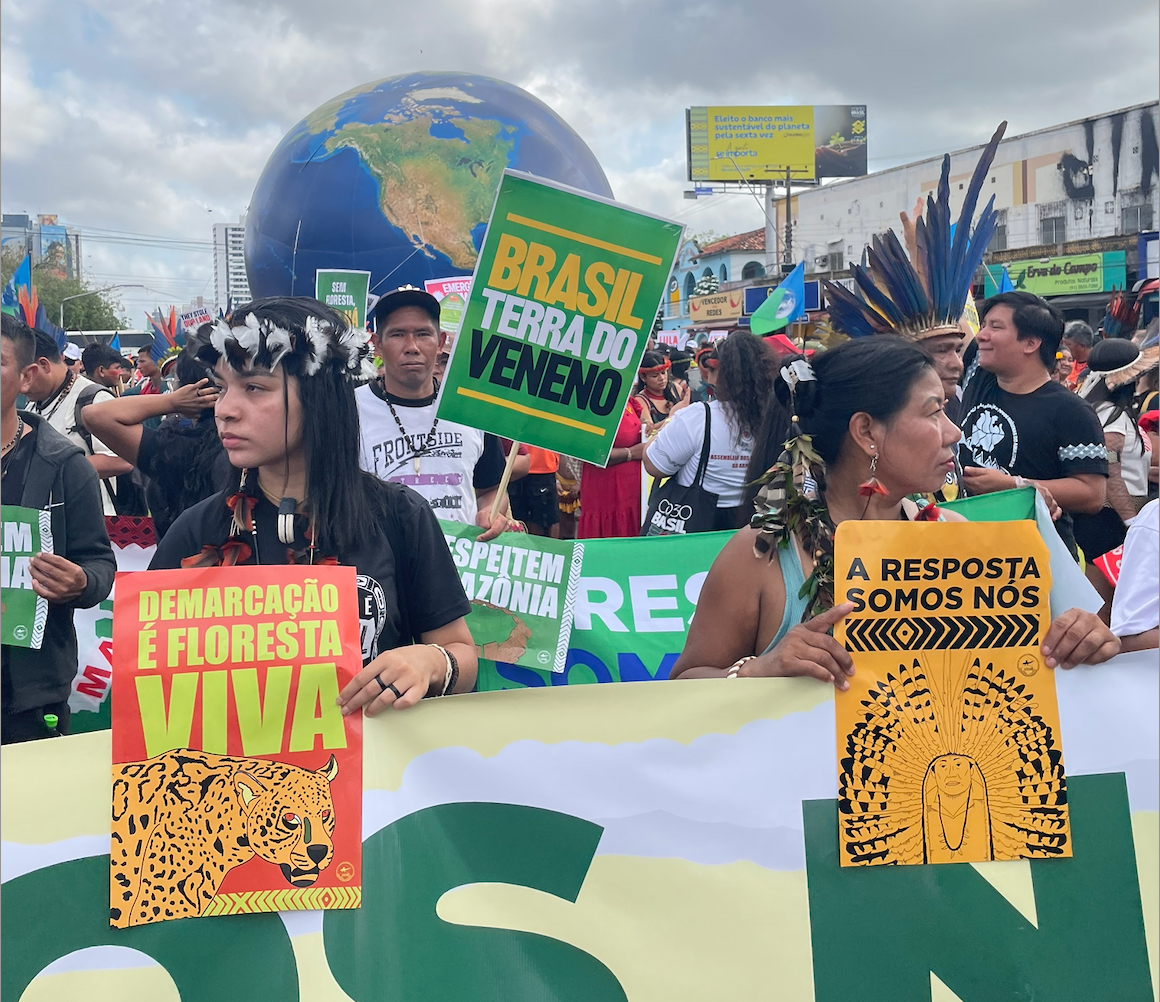
I concluded that, although I disagree with many of the COP's dynamics, which remain purely colonialist, we must maintain our presence and fight for our rights, reclaiming the spaces that belong to us by birthright, because if we are not there, it is clear that no one else will be. We must also openly denounce the extractive companies and the complicit states that, with a false discourse of “green energy,” are killing us, as Xananine (Ngiwa) points out:
“It is important to denounce the industries, which are the only ones with the resources to be here, and to say that what they propose as solutions, carbon markets, agrochemicals, industrial farms, are not the solution, and that they only continue to dispossess, continue to replicate the same system that dispossesses, that kills life and that is what created the climate crisis.”
In short, although insecurities and fears may initially arise when attending an event of this magnitude and raising our voices, I will not forget the advice of Gandy Grefa (Kichwa, Ecuador): “Let’s not be afraid of a microphone, let’s not be afraid to raise our voices, let’s not be afraid to speak to the camera. Let’s say what we feel: that this is the voice of the people and that we will all support that voice.”
Finally, Alexis Grefa (Kichwa, Ecuador) encourages us to make the most of COP25 in our own way:
“The sheer number of spaces here is overwhelming, and encountering a world completely different from our own, where our languages and cuisine are unfamiliar, can be exhausting and lead us to believe that this space solves nothing—and it truly doesn't. However, we can view it from another perspective and leverage this system as a tool that allows us to forge alliances with other communities, learn about new experiences and mechanisms that we can somehow adapt to our own realities. If we truly want to change a system, we must first go there to change it from the ground up.”
I know I still have a long way to go to fully understand how the UNFCCC and the COP work, and to have a greater impact on my people and my sister communities. Being able to talk with Indigenous youth from different territories made me feel understood and supported. Knowing I wasn't the only one with more questions than answers, with uncertainty and skepticism, made me realize that we are facing a structural problem in which, in this arena of the geopolitical game of states, we cannot stand idly by and allow them to decide for us.
We need more young people and children who are aware and informed about the reality we are living in, who want to contribute their knowledge to work collectively in the resistance against the climate change crisis. A crisis that we did not cause, but that we are willing to confront, because our relationship with the environment goes beyond power dynamics, egos, and the desire to accumulate and possess more and more. Fortunately, we still have hope, and that can move mountains. So let's share our sources of information, build networks, and prepare together, because only in this way can we continue working towards this collective commitment to all Indigenous Peoples of the world.
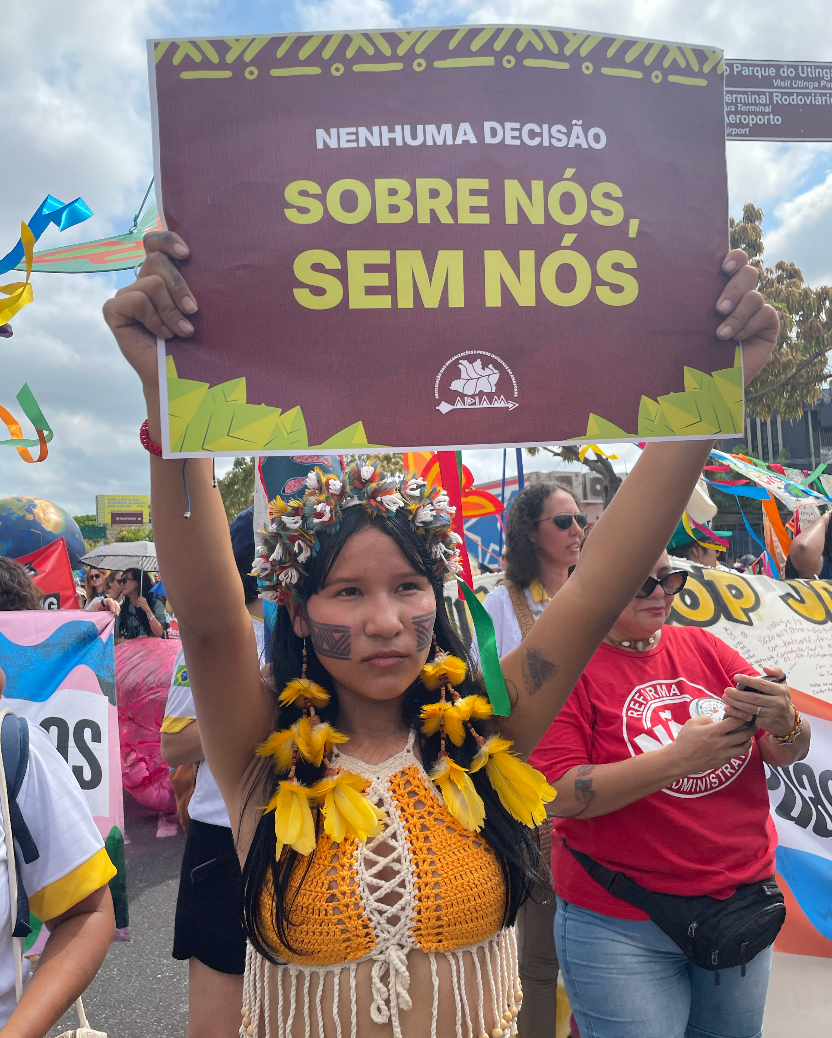
““The first experience will be more difficult, more uncomfortable; it’s a place of awkward conversations, but it’s very important that we never lose hope. We, who are on the front lines of the struggle, we, who are on the front lines of defending life, we, who are on the front lines of defending Indigenous and Quilombola rights—which are essentially human rights, which defend other futures for everyone—must always sow hope, however difficult the path may be. So my advice to everyone is this: come with strength and hope, because there is a space there for us to occupy and to get ever closer to our collective goals.” Djalma Ramalho (Aranã Caboclo)

